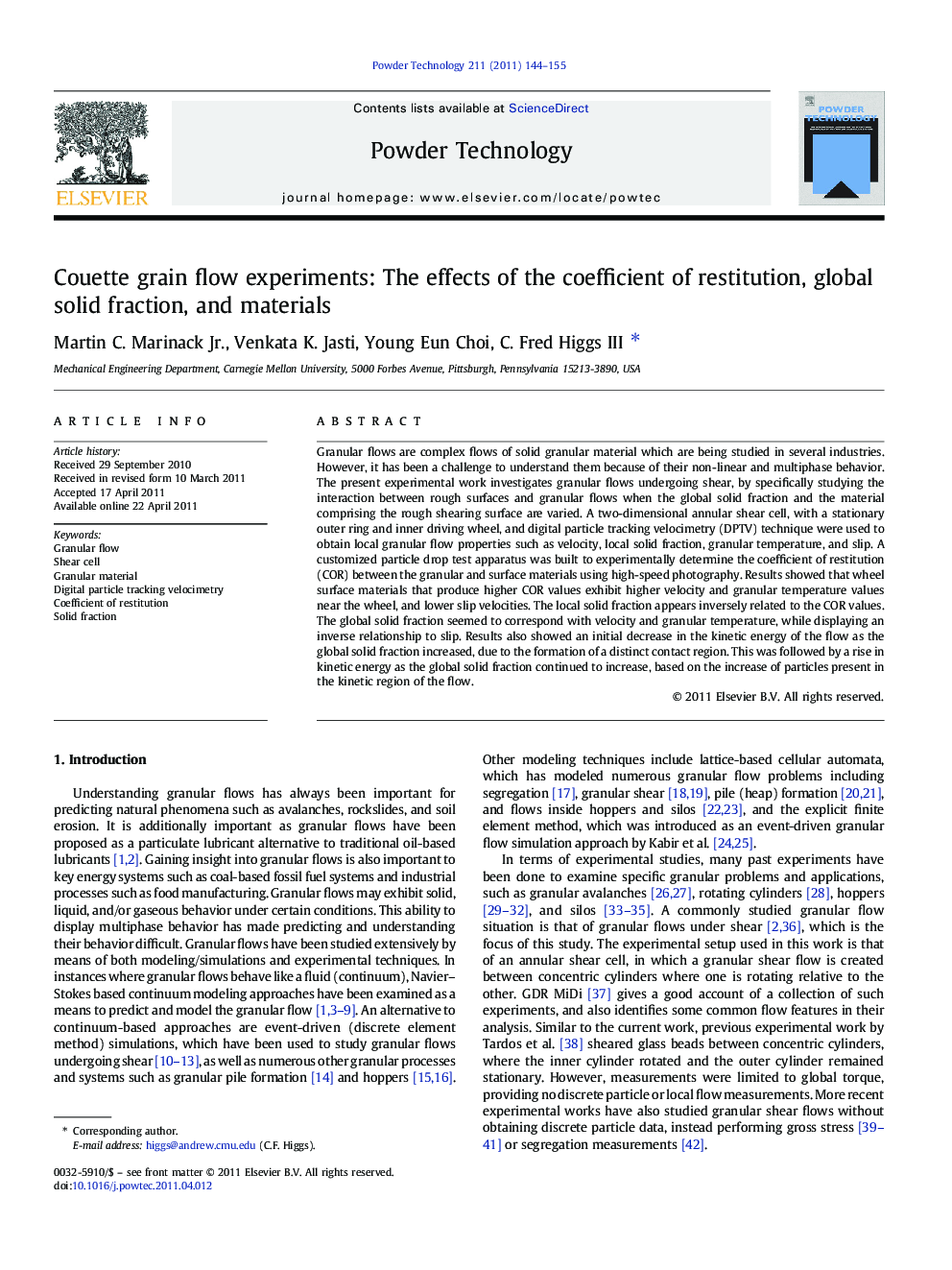| Article ID | Journal | Published Year | Pages | File Type |
|---|---|---|---|---|
| 237558 | Powder Technology | 2011 | 12 Pages |
Granular flows are complex flows of solid granular material which are being studied in several industries. However, it has been a challenge to understand them because of their non-linear and multiphase behavior. The present experimental work investigates granular flows undergoing shear, by specifically studying the interaction between rough surfaces and granular flows when the global solid fraction and the material comprising the rough shearing surface are varied. A two-dimensional annular shear cell, with a stationary outer ring and inner driving wheel, and digital particle tracking velocimetry (DPTV) technique were used to obtain local granular flow properties such as velocity, local solid fraction, granular temperature, and slip. A customized particle drop test apparatus was built to experimentally determine the coefficient of restitution (COR) between the granular and surface materials using high-speed photography. Results showed that wheel surface materials that produce higher COR values exhibit higher velocity and granular temperature values near the wheel, and lower slip velocities. The local solid fraction appears inversely related to the COR values. The global solid fraction seemed to correspond with velocity and granular temperature, while displaying an inverse relationship to slip. Results also showed an initial decrease in the kinetic energy of the flow as the global solid fraction increased, due to the formation of a distinct contact region. This was followed by a rise in kinetic energy as the global solid fraction continued to increase, based on the increase of particles present in the kinetic region of the flow.
Graphical abstractNumerous granular shear experiments were performed as part of this study, using a 2D granular shear cell with a stationary outer rim and a quantifiably rough inner rotating wheel. This work studies the effect of varying the wheel surface material and the global solid fraction, on local granular flow properties.Figure optionsDownload full-size imageDownload as PowerPoint slideHighlights► Increased COR results in higher tangential velocity in the kinetic region. ► Higher granule-wall COR values show a reduction in slip at the moving wheel. ► Increased global solid fraction leads to an increase in granular temperature. ► Increased global solid fraction caused decreased slip at the wheel boundary. ► An initial decrease in kinetic energy occurs as the flow develops a contact region.
